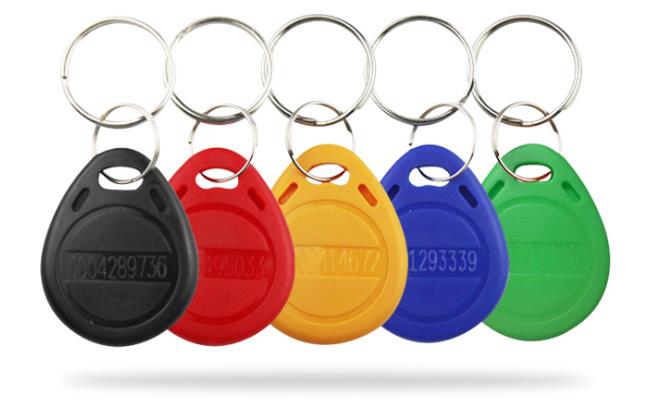Key Fobs use in access control

Key fobs are small, portable devices used in access control systems to provide secure and convenient entry to buildings, rooms, or other restricted areas. Heres an overview of how key fobs are used in access control:
1. Functionality
- Electronic Access: Key fobs contain a unique identifier (usually through RFID or NFC technology) that communicates with a reader installed at entry points like doors, gates, or turnstiles.
- Authentication: When a key fob is brought close to a reader, the system verifies the identifier against a database of authorized users and grants or denies access based on the permissions set for that specific fob.
2. Security Features
- Encrypted Communication: Many key fobs use encryption to prevent unauthorized copying or hacking, ensuring that only authorized personnel can gain access.
- Customizable Access Levels: Access can be restricted to specific times, dates, or areas, allowing for granular control over who can enter where and when.
- Audit Trails: Access control systems can log each use of a key fob, providing a record of who entered specific areas and at what time, which is valuable for security audits.
3. Convenience
- Contactless Operation: Users can simply wave the key fob near the reader, making it a quick and hygienic way to gain entry.
- Compact and Portable: Key fobs are small and easy to carry, often attached to a keychain for convenience.
- Multi-Purpose Use: In addition to access control, key fobs can be programmed for other functions, such as activating alarms, logging time and attendance, or even making cashless payments in some settings.
4. Applications
- Corporate Buildings: Used by employees to access offices, meeting rooms, and other secure areas within a company.
- Residential Complexes: Residents use key fobs to enter buildings, parking garages, and communal areas like gyms or pools.
- Educational Institutions: Key fobs provide students and staff with access to classrooms, labs, and dormitories.
- Healthcare Facilities: Used to restrict access to sensitive areas such as medication rooms or patient records.
5. Management and Integration
- Easy Issuance and Revocation: Key fobs can be quickly issued to new users and deactivated or reprogrammed if lost, stolen, or when access needs change.
- Scalable Systems: Access control systems using key fobs can easily scale to accommodate a growing number of users or expand to cover additional access points.
- Integration with Other Systems: Key fobs can be integrated with other security systems, such as CCTV or alarm systems, for a comprehensive security solution.
6. Advantages Over Traditional Keys
- Enhanced Security: Unlike traditional keys, key fobs cannot be easily duplicated, and lost fobs can be quickly deactivated.
- Reduced Wear and Tear: Key fobs do not require physical contact with the lock, reducing wear on both the fob and the locking mechanism.
- Flexibility: Permissions can be updated remotely, allowing for quick changes without the need to reissue physical keys.
7. Emerging Technologies
- Smartphone Integration: Some modern access control systems allow smartphones to function as key fobs, using mobile apps and Bluetooth technology.
- Biometric Key Fobs: Combining biometric verification with a key fob for an additional layer of security, such as fingerprint scanning or facial recognition.
Key fobs are an integral part of modern access control systems, offering a blend of security, convenience, and flexibility, making them suitable for a wide range of environments.